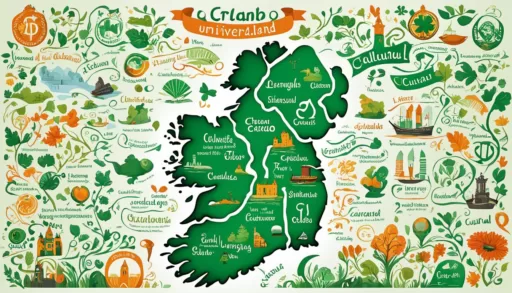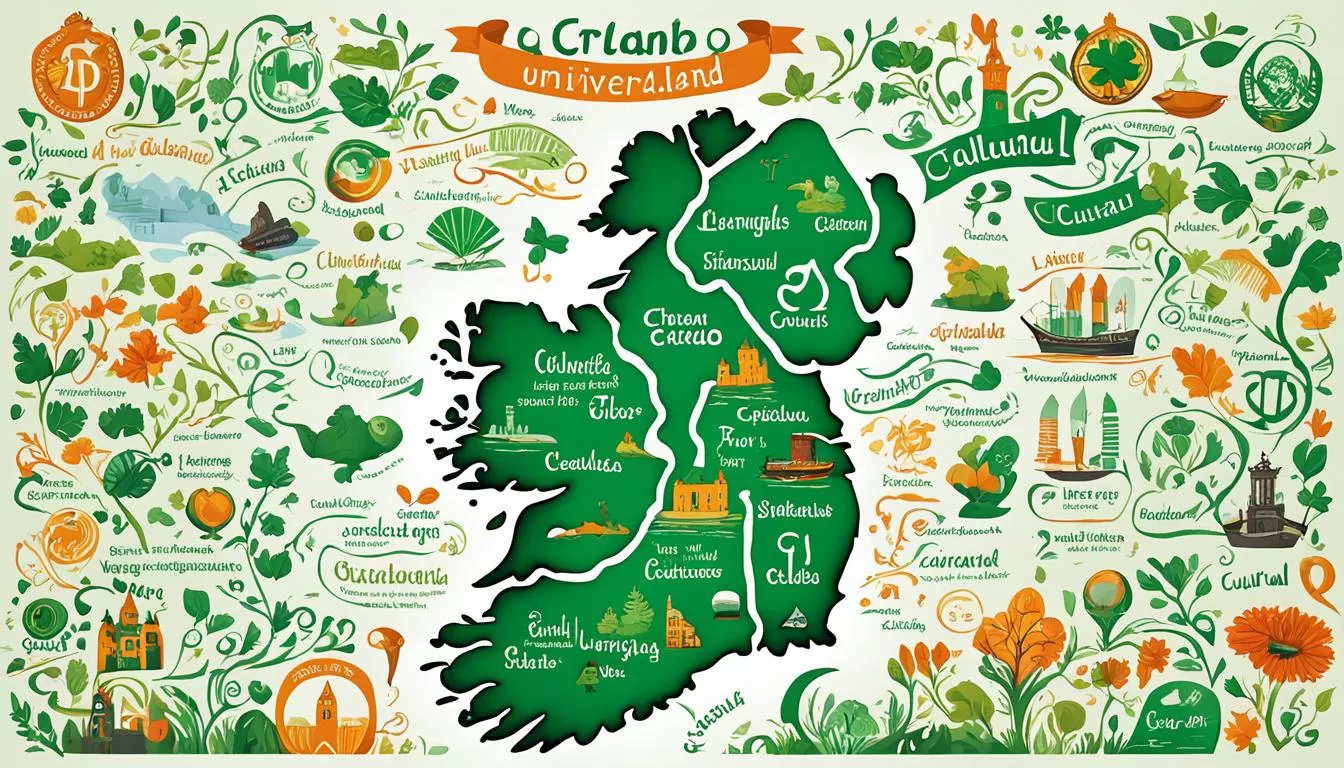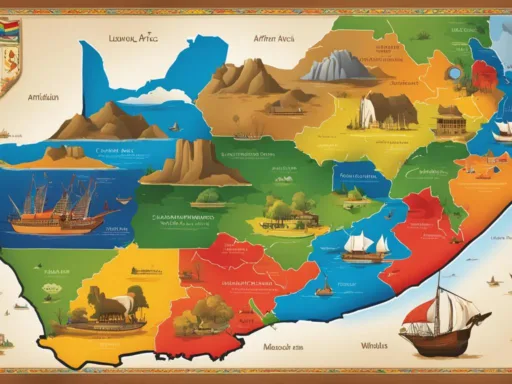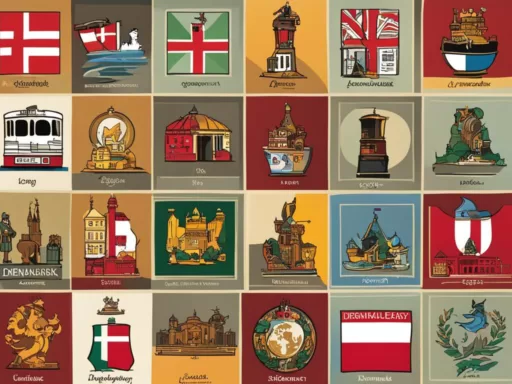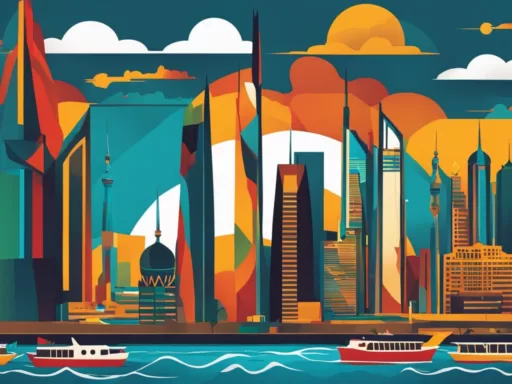As visitors meander through the bustling streets of Dublin or the quaint laneways of Galway, they’re enveloped in the linguistic quilt that drapes across Ireland. Irish Gaelic, with its lyrical cadence and historical charm, sits proudly alongside English, the island’s accommodating common tongue. This fascinating mix epitomizes the linguistic diversity inherent to the verdant land’s culture. Whether it’s in the vibrant chatter of Ireland’s multifaceted metropolises or the hushed whispers of the serene countryside, languages spoken in Ireland are as enchanting as the landscape itself.
The custom of Irish Gaelic, likened to a historic artifact, showcases a resilience, echoing through schools and traditional hubs termed Gaeltachts. Here, Irish, undiluted by time, thrives vibrantly. Meanwhile, the English language, marked distinctly with an Irish flare known as Hiberno-English, bridges conversations among both locals and visitors from a myriad of backgrounds, reflecting Ireland’s cosmopolitan nature. On Ireland’s streets, one can stumble upon words wrapped in Polish inflections or molded by Brazilian Portuguese—a testament to the island’s welcoming spirit.
Key Takeaways
- English serves as a universal bridge, facilitating communication among Ireland’s diverse population.
- Irish Gaelic remains a treasured element of the nation’s cultural and linguistic heritage.
- The linguistic diversity in Ireland reflects its history and its embrace of global cultures.
- Gaeltacht regions are vibrant strongholds where Irish Gaelic is spoken in daily life.
- Ireland presents an inclusive linguistic tapestry, integrating languages from across the world.
The Predominant Tongue: English in Ireland
In the heart of Ireland, the English language serves not only as a bridge connecting various cultures but also as a medium through which the unique Irish identity resonates. The presence of English in the day-to-day lives of the Irish people reveals a complex tapestry of cultural influence, where the vibrancy of Hiberno-English lends a distinct linguistic identity to this nation.
Hiberno-English: A Unique Irish Flavor
The variant of English spoken in Ireland, known as Hiberno-English, has emerged from the enchanting fusion of the Germanic roots of English with the Celtic charms of Irish. This linguistic alchemy has resulted in idioms and grammatical structures that are quintessentially Irish, giving the language a rhythmic twist that is echoed in the spirited conversations of its people. Hiberno-English is not just a reflection of Ireland’s linguistic identity; it is the cultural currency that facilitates the exchange of folklore and traditions, effectively shaping the nation’s social fabric.
English Language Influence on Irish Society and Culture
From the hallowed halls of academia to the rustic pubs of the Gaeltacht, the English language asserts its dominance while being shaped by Ireland’s rich cultural heritage. It plays a pivotal role in administration and commerce, education and arts, connecting Ireland to the global stage while preserving its cultural uniqueness. In every corner of Ireland, from the bustling streets of Dublin to the serene countryside of County Clare, the influence of English is both seen and felt – in signage, in media, and in the linguistic dexterity of its citizens.
Notably, in cities like Belfast, cultural centers dedicated to both English and regional languages, such as Ulster-Scots, showcase the deep-seated cultural pride and linguistic diversity that are hallmarks of Irish society. These hubs of language and culture underscore the fact that while English serves as Ireland’s window to the world, it is the distinct flavor of Hiberno-English that offers a taste of the nation’s soul.
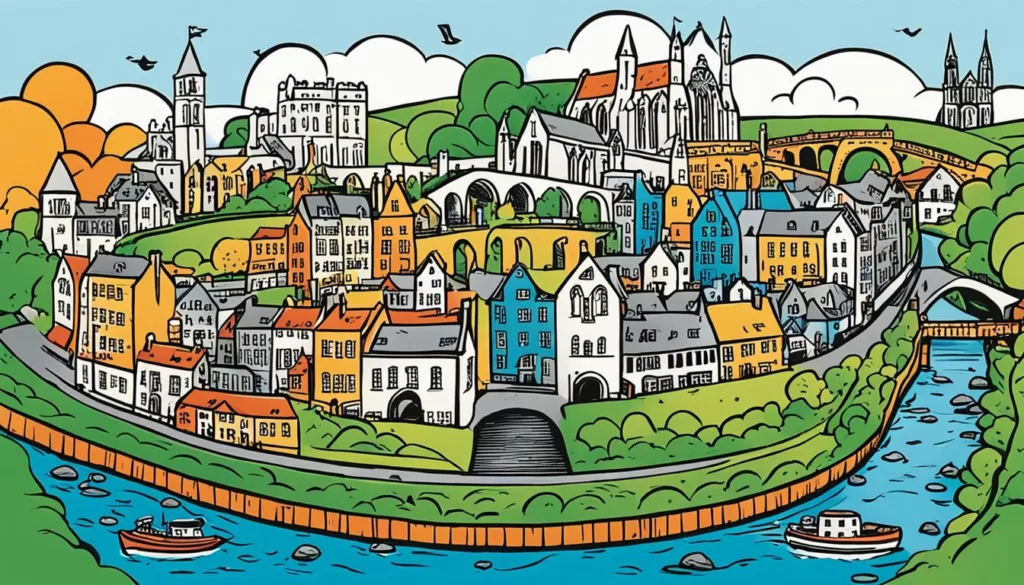
In conclusion, as the predominant tongue, English undeniably shapes Ireland’s global connectivity, while at the same time, it is intricately woven into the very essence of Irish life. In a land where words are treasured and eloquence celebrated, the story of English in Ireland is one that is continuously evolving, ever-enriching, and profoundly captivating.
Languages Spoken in Ireland: A Look at Ireland’s Linguistic Diversity
The cultural richness of Ireland is remarkably mirrored in its linguistic landscape, which resonates with a symphony of linguistic diversity. This diversity is not solely the result of historic celtic roots, but also the consequence of modern migration, weaving together a tapestry inclusive of a multitude of minority languages spoken across the nation. From the ceaseless murmurs of Irish Gaelic and English to the discernible melodies of immigrant tongues, languages spoken in Ireland amplify the nation’s cultural opulence.
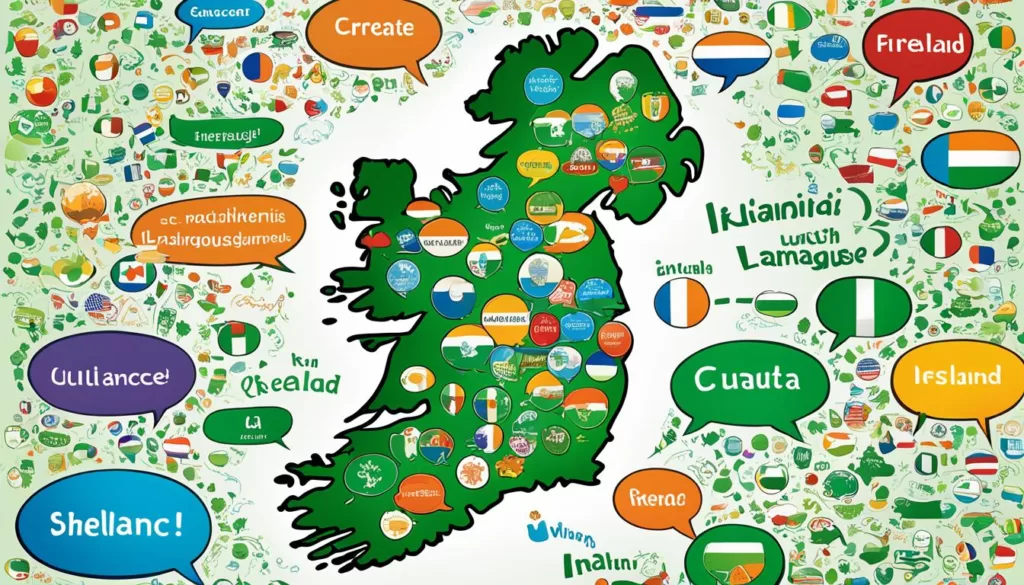
Central to this vibrant mix are the voices of European settlers, who have brought with them an assortment of languages, each contributing to the wide array of daily spoken dialects that characterize Ireland’s welcoming atmosphere. Let us delve into the various languages that form the vocal chords of Ireland’s multicultural conversations.
| Language | Origin | Speakers in Ireland | Cultural Influence |
|---|---|---|---|
| Polish | Indo-European | Significant | Influential in communities & contributing to multilingual signs |
| French | Romance | Widespread among learners | Reflected in education & cultural exchanges |
| Lithuanian | Baltic | Growing community | Enriching local culture & businesses |
| Spanish | Romance | Expansive among students & expatriates | Integrated into the arts & culinary scene |
Beyond these common languages, one finds the influence of less widespread yet equally significant ones such as Latvian and Croatian, forming a cultural richness that is distinctly Irish in its inclusivity and representation. From the well-established Polish community contributing to local economies and education systems, to the romantic languages opening doors to commerce and cultural exchange, Ireland is a picturesque montage of languages that champions the ethos of diversity.
In essence, Ireland’s linguistic tapestry is a testament to its history of kinship and cordiality. It is a land where voices from all over the globe are embraced with equal delight, crafting a society that is as beautiful and varied as the verdant hues of the Irish landscapes themselves.
Ireland’s Native Language: The Irish Gaelic
Steeped in history and enriched by centuries of tradition, Irish Gaelic—or simply Irish—stands tall as the first official language of the Republic of Ireland. Revered for its melodic intonation and cultural importance, Irish Gaelic is an intrinsic part of Ireland’s identity. As we explore the contours of Ireland’s linguistic heritage, one cannot overlook the significance of Irish as a symbol of national pride and cultural preservation.

Irish Gaelic: The National and First Official Language
In a world where global tongues dominate, Irish Gaelic’s status as a Celtic language and first official language sets the Republic of Ireland apart. Spoken by over half a million people, this language is not only vital for communication but also critical for maintaining Ireland’s rich linguistic heritage. Recognized within the European Union, Irish Gaelic exemplifies the country’s steadfast commitment to its linguistic heritage and the sustained efforts towards Irish language preservation.
Gaeltacht Regions: Bastions of the Irish Language
Widely celebrated as the heartlands of Irish Gaelic, the Gaeltacht regions are true bastions where the language pulsates through the day-to-day lives of their inhabitants. These areas, primarily gracing Ireland’s rugged west coast, offer a window into a living culture where Irish Gaelic thrives organically within the community. The Gaeltacht stands as a testament to the country’s resolve in protecting and promoting its linguistic heritage, inviting both residents and visitors to immerse in its enchanting aura.
| Region | Population | Daily Irish Speakers | Cultural Significance |
|---|---|---|---|
| Donegal Gaeltacht | 24,744 | 17,132 | A cultural hub known for its music and folklore |
| Mayo Gaeltacht | 10,886 | 6,667 | Home to the Irish language theatre, An Taibhdhearc |
| Galway Gaeltacht | 48,907 | 29,611 | Renowned for its literary heritage and traditional arts |
| Kerry Gaeltacht | 35,283 | 23,175 | Preserves ancient Irish customs and crafts |
The support and revitalization of Irish Gaelic in these regions have given rise to an environment where the language is not just retained but celebrated, ensuring that this vital component of Ireland’s linguistic heritage endures for generations to come.
Ulster Scots and Shelta: Ireland’s Minority Languages
In the emerald tapestry of Ireland’s languages, the strands of Ulster Scots and Shelta are woven with a particularly vibrant hue. These minority languages are integral to the country’s cultural heritage, offering a rich pageant of linguistic uniqueness that adds depth to the already intricate Irish linguistic landscape. Diving into the distinct qualities of Ulster Scots and Shelta unveils not only their historical significance but also their ongoing cultural resonance amongst Irish communities.
Ulster Scots: A Language or Dialect?
Ulster Scots, often referred to as Ullans, has its roots firmly planted in the history of Northern Ireland. Residing in the crosshairs of a linguistic debate, Ulster Scots straddles the line between being designated a dialect of Scots and a language in its own right. Regardless of its classification, it’s a beacon of linguistic uniqueness within Ireland. The Ulster Scots Agency, devoted to the celebration and promotion of Ulster Scots culture, emphasizes its relevance to Irish and Scots heritage alike, maintaining its prestige as an essential component of the region’s linguistic identity.
Ulster Scots Agency promotes Ulster Scots’ linguistic and cultural vibrancy, regardless of its language or dialect status.
Shelta: The Secret Language of Irish Travellers
Shelta, the secretive cant of the Irish Travellers, is a linguistic testament to the close-knit nature of this indigenous community. It is a chimera of both Irish and English, shrouded in mystery and often morphed when non-speakers are present, to maintain its arcane qualities. As a powerful social identifier and a repository of cultural heritage, Shelta is not only a mode of communication but also a marker of identity and solidarity among Irish Travellers.
| Language | Community | Origins | Cultural Role |
|---|---|---|---|
| Ulster Scots | Irish and Scots | Scots migration in the 17th century | Emblem of cultural identity and heritage. |
| Shelta | Irish Travellers | Blend of Irish and English influences | Secretive cant serving as a social and cultural identifier. |
The everyday use and preservation of Ulster Scots and Shelta within their respective communities mirror Ireland’s broader commitment to upholding the diverse voices that contribute to its storied past and dynamic present. Indeed, these languages underscore the rich tapestry of communication and tradition that is characteristic of the Irish people.
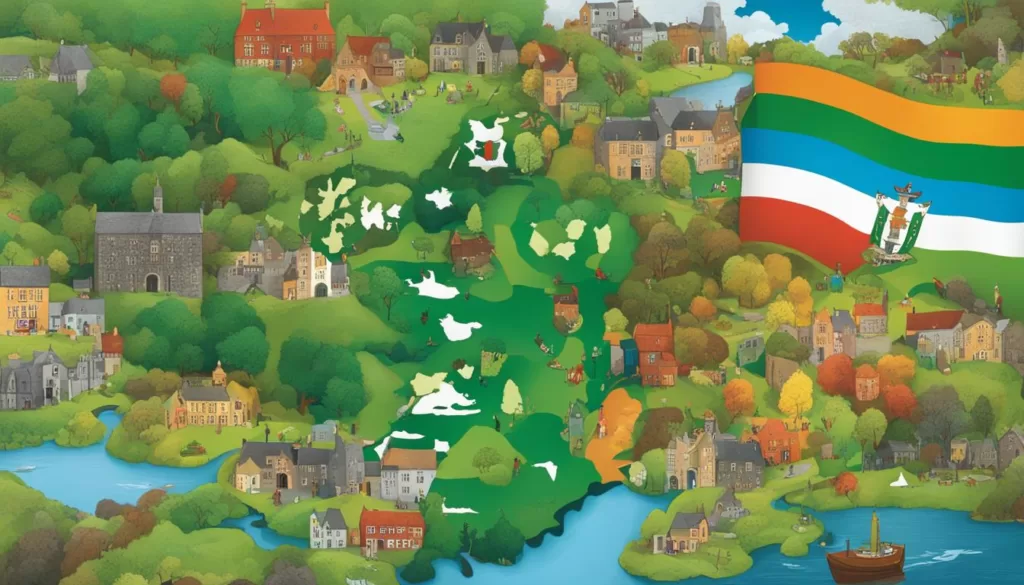
Sign Languages and Immigrant Tongues
In the evolving narrative of Ireland’s languages, the silent yet expressive world of non-verbal communication emerges powerfully through Irish Sign Language (ISL). This rich form of expression stands out in the diverse linguistic landscape of Ireland, woven into the fabric of daily life. Beyond this silent dialogue, the voices of immigrant communities add colorful threads to Ireland’s linguistic tapestry, signifying ongoing language evolution.
Irish Sign Language: Communicating Non-Verbally
ISL represents a profound conduit for connection within the deaf community, untethered to both Irish and English, stressing the plurality of communication methods available on the island. With parallels to French Sign Language, ISL epitomizes the breadth of non-verbal communication in Ireland. ISL’s distinct grammar and syntax highlight the inherent versatility and adaptability of language, underscoring the importance of inclusion in linguistic practices.
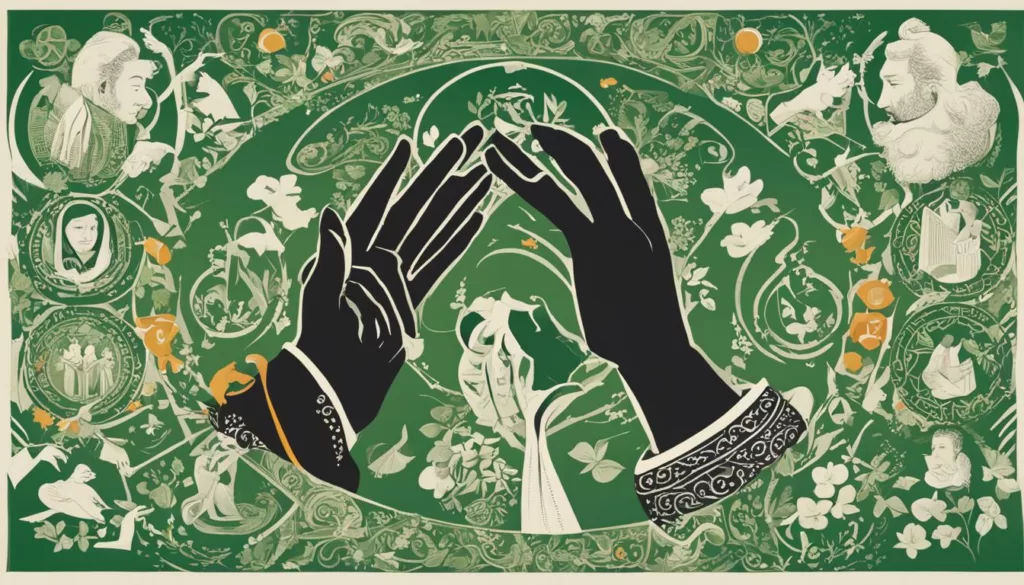
The Impact of Immigration on Ireland’s Language Tapestry
The influx of individuals from distant shores has indelibly influenced the country’s language scenario. Ireland now sings with an ever-more varied linguistic melody, as over 15,000 Chinese speakers, alongside burgeoning populations speaking Polish, Lithuanian, and other immigrant languages, contribute to the societal chorus. Their traditions and languages are imprinted upon Ireland’s cosmopolitan cities and burgeoning international districts, from bustling supermarkets suffused with a plethora of global flavors to the festive rapture of cultural events, all synchronizing harmoniously within Ireland’s cultural sphere.
| Language | Community Size | Cultural Impact |
|---|---|---|
| Chinese | Over 15,000 speakers | Enriched cultural festivals and cuisine diversity |
| Polish | Significant Polish community | Integration in schools, businesses, and multilingual signage |
| Lithuanian | Growing presence | Added to the cultural tapestry through community initiatives and businesses |
These communities not only enrich Ireland with their languages but also implant their unique traditions into the very soil of Irish life, showcasing the ever-expanding quilt of cultures that define modern Ireland. Thus, the story of language in Ireland continues, a story that remains open, inviting, and ever-changing—a reflection of an island that both honors its heritage and eagerly writes new chapters of cultural convergence.
Conclusion
The Irish linguistic tapestry is a vibrant expression of the nation’s heart and soul. An exploration of the languages spoken on this verdant island reveals the profound depths of cultural diversity and a shared resolve for language preservation. In the rural serenity of the Gaeltacht, the melodic strains of Irish Gaelic illustrate Ireland’s dedication to cherishing its heritage. Simultaneously, the urban hum of immigrant languages showcases an equally steadfast commitment to embracing new cultural influences, thereby contributing to Ireland’s linguistic future.
Ireland’s embrace of its linguistic roots, together with its forward-looking perspective, tells a tale of a society that values every thread of its historic weave. From the poetic resonance of Irish Gaelic, the quaint charm of Ulster Scots, to the communicating gestures of Irish Sign Language, and the global symphony of languages introduced by recent settlers, the island’s linguistic landscape is as diverse as it is dynamic. These elements are not simply means of conversation; they are the sinews that connect the past with the present and future, ensuring the continuity of Ireland’s unique cultural fabric.
Reflecting on Ireland’s array of languages provides more than a snapshot of cultural identity—it betokens an ongoing commitment, a collective will that champions the beauty of linguistic plurality. As Ireland continues to evolve, its dedication to each voice, spoken or signed, narrates an inclusive tale of identity, community, and progression. Indeed, the sonorous echoes from every corner of Ireland affirm a timeless respect for the richness of communication and the inherent worth found in its preservation. Thus, we see the importance of protecting this invaluable legacy for generations to come, solidifying Ireland as a nation that not only remembers its history but also joyously anticipates its linguistic future.
FAQ
What are the main languages spoken in Ireland?
The main languages spoken in Ireland are English and Irish Gaelic. English is the predominant language used for official purposes, education, and daily communication, while Irish, a Celtic language, is recognized as the national and first official language of the Republic of Ireland. The linguistic landscape of Ireland also includes minority languages like Ulster Scots, Shelta, and a variety of immigrant languages.
What is Hiberno-English?
Hiberno-English refers to the distinct form of English spoken in Ireland. It incorporates Irish grammatical structures, idioms, and vocabulary, giving it a unique flavor that reflects the influence of the Irish language and cultural identity.
How does the English language influence Irish society and culture?
The English language plays a central role in Irish society and culture. It is prevalent in the media, formal education, and business, making it an essential tool for social and economic engagement. Additionally, the unique variant of English spoken in Ireland reflects the nation’s history and influences its culture and everyday interactions.
How does Ireland’s linguistic diversity manifest in everyday life?
Ireland’s linguistic diversity is evident in the multitude of languages you can hear in its cities and towns. This includes a growing number of immigrant languages like Polish, French, Spanish, Portuguese, and various Asian and Eastern European languages. Public signage often displays information in multiple languages, and festivals and culinary offerings reflect this cultural richness.
What is the significance of the Irish language today?
Irish Gaelic, or simply Irish, has significant cultural and historical importance in Ireland. It is the national and first official language, and while it is spoken as a first language mainly in the Gaeltacht regions, efforts to revitalize and promote Irish are ongoing, reflecting the country’s commitment to its linguistic heritage.
What are the Gaeltacht regions?
The Gaeltacht regions are areas in Ireland where Irish Gaelic is the foremost community language. These regions are mainly located along the west coast of Ireland and are recognized for their promotion of the Irish language and culture. They serve as a hub for learners and speakers of Irish to engage in a linguistically rich environment.
Is Ulster Scots a language or a dialect?
There is debate over whether Ulster Scots should be classified as a distinct language or as a dialect of Scots. It has its own linguistic culture and society and is considered an important aspect of Ireland’s linguistic identity, regardless of its classification.
What is Shelta?
Shelta is a secret cant or cryptolect primarily spoken by the Irish Traveller community. It blends elements of Irish and English and serves as a social identifier for the community. Its lexicon and structure are often intentionally altered in the presence of non-speakers to maintain its secrecy and exclusivity.
How is Irish Sign Language unique?
Irish Sign Language (ISL) is unique in that it is influenced by French Sign Language rather than British Sign Language, which is consistent with many other sign languages used in English-speaking countries. ISL serves as the primary form of communication for the deaf community in Ireland and is structurally distinct from both spoken Irish and English.
What impact has immigration had on Ireland’s linguistic tapestry?
Immigration has had a profound impact on Ireland’s linguistic tapestry, introducing a diverse range of languages from across the globe. This has led to a vibrant multilingual society where languages such as Polish, Chinese, Lithuanian, Romanian, and many others contribute to the country’s linguistic and cultural diversity, enriching Ireland’s communities and broadening the nation’s global connections.
